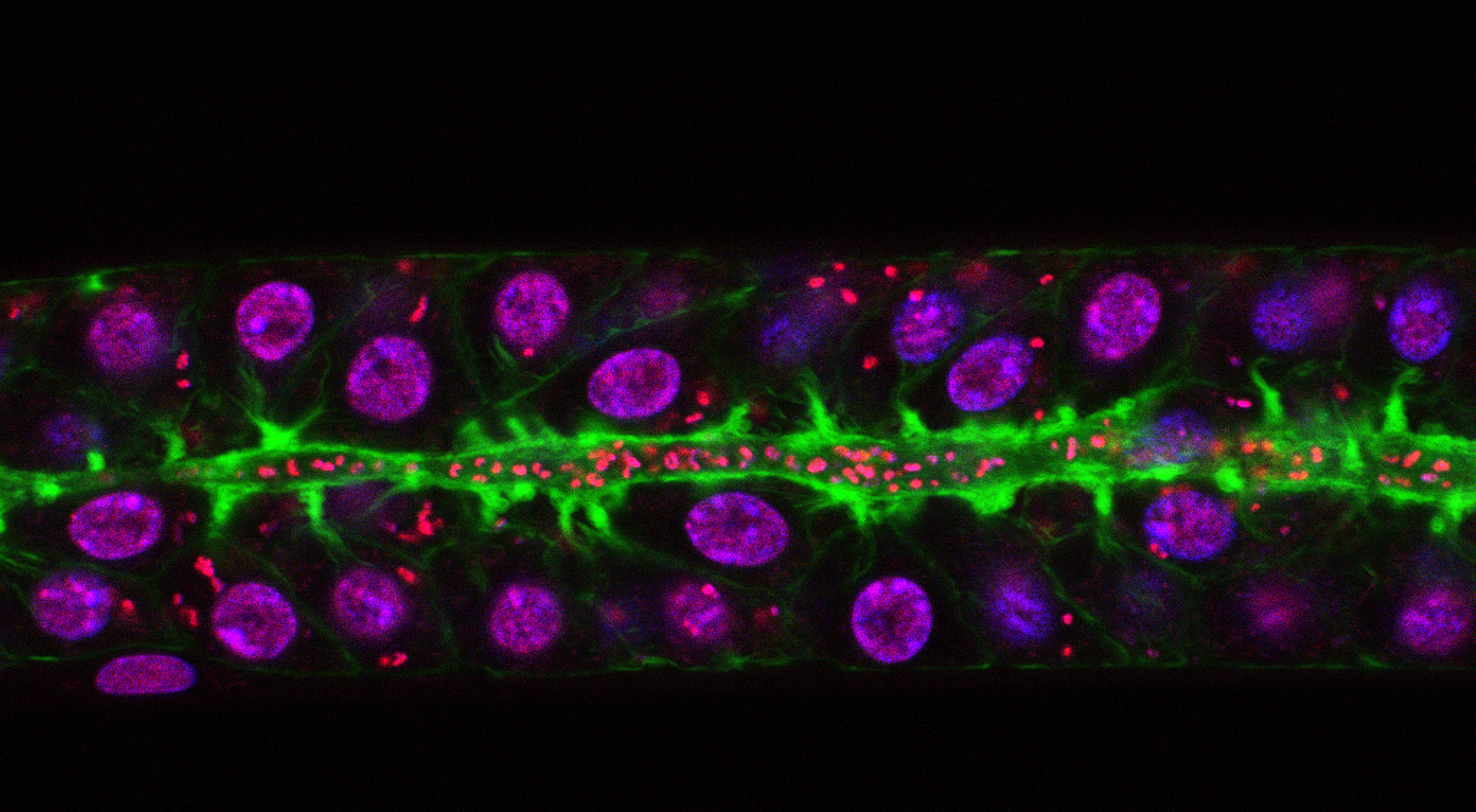
Nature's master manipulator
Exposing the secrets of a successful symbiont
Calling a lowly microbe intelligent may seem over the top, but you can forgive a little hyperbole when Bill Sullivan describes the bacterium Wolbachia as “really smart.” Sullivan, UC Santa Cruz distinguished professor of molecular, cell, and developmental biology, is explaining how the intracellular parasite sneaks its way through the embryos of certain fruit flies and into their nascent eggs, allowing it to pass from one generation of flies to the next. Wolbachia appears to do this by hitching rides on the fly’s motor proteins, which carry supplies to the egg-producing region of the embryo. The proteins march along a system of microtubules, like porters lugging cargo up the gangways of ships.
Partway through the proceedings, the embryo does a 180, flipping the polarity of the microtubules. Motor proteins that had been trooping toward the egg-zone do an about-face and start heading away. Getting to the mothership now requires hopping aboard a different type of motor protein, designed to seek the “plus” end of the microtubule instead of the “minus” end. And—here’s the really smart part—that’s exactly what Wolbachia does, deftly rejiggering binding sites on its surface to make the switch. If, as Sullivan suspects, the embryo’s microtubular reversal is meant to deflect invading parasites, Wolbachia does an end-around and keeps on coming.
The great pandemic
That maneuver, discovered by Sullivan and colleagues, is just one of many exploits that have made Wolbachia one of the most successful parasites on Earth. It’s believed to infect roughly half the world’s several million insect species. Stick a butterfly or beetle, wasp or fly, ant or bedbug under a sufficiently powerful microscope, and there’s a decent chance you’ll find Wolbachia in some of its cells, tucked into the cytoplasm like tapioca pearls in pudding. Wolbachia shacks up in other invertebrates, too, including mites, ticks, spiders, and some nematode worms. Its sheer ubiquity has led some scientists to dub the contagion “one of the great pandemics in the history of Life.”
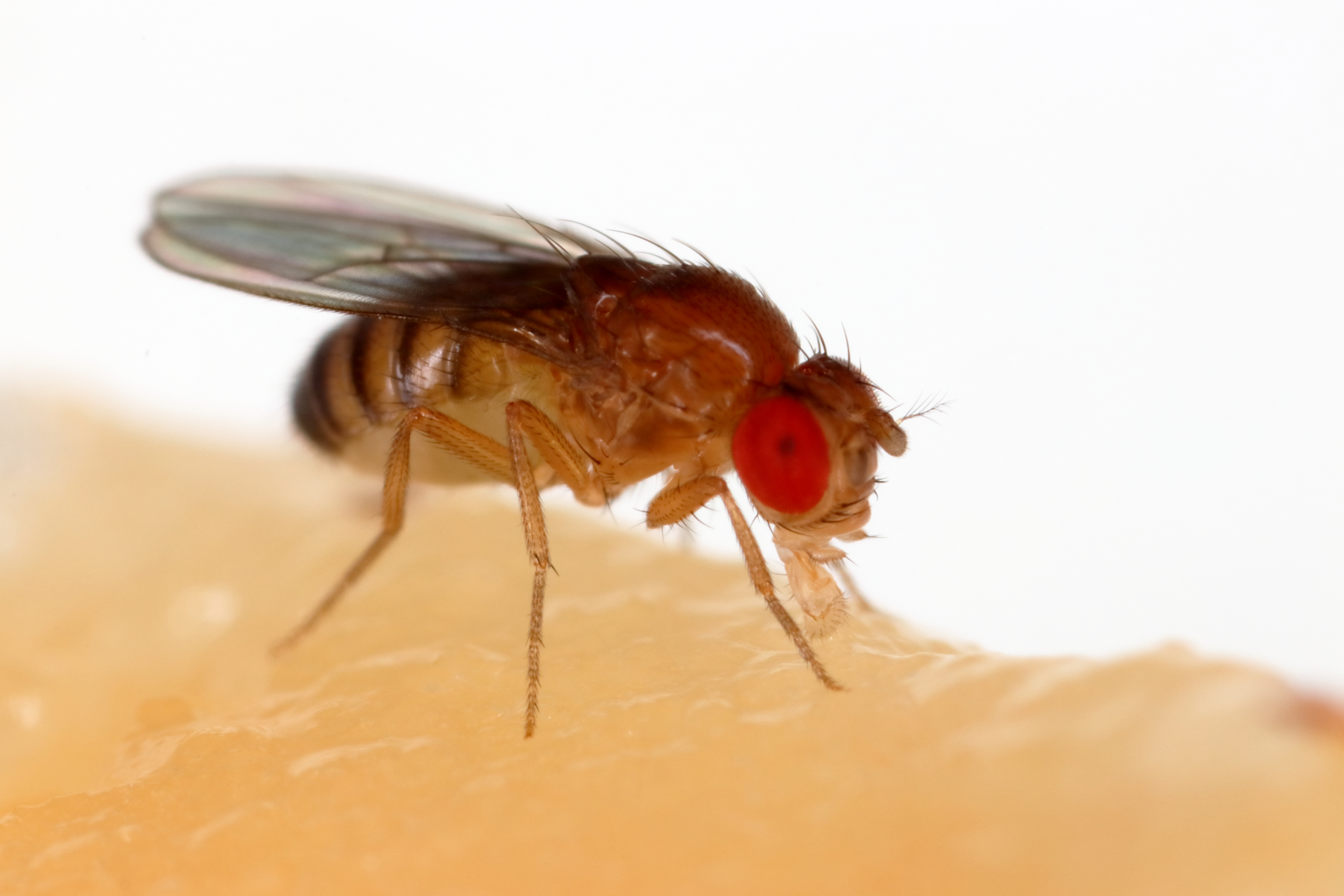
Wolbachia doesn’t directly infect humans, but it has a way of getting into the heads of biologists captivated by its machinations, its global conquests, and increasingly, its potential as a weapon against some of humanity’s greatest scourges. “It’s an amazing organism,” said Laura Serbus, a former postdoc of Sullivan’s who now studies Wolbachia in her own lab as an assistant professor of biological sciences at Florida International University. “It’s teaching us so much about how infections and cells themselves work.”
Sullivan’s own relationship with Wolbachia started casually enough. He was teaching an undergraduate genetics course and looking to liven things up with field trips. When he read that a bacterium, Wolbachia, was sweeping northward through California’s fruit fly population, he hatched a plan: he and his students would hit up local wineries and apple orchards, collect the swarming flies, and analyze them to see if the infection had reached Santa Cruz County (it had).
That was 20 years ago, and what began as a fling has become a lasting passion. Today, Sullivan is recognized as a leading expert on Wolbachia, at a time when worldwide interest in the bacterium is exploding. “The field has gotten so much more crowded and competitive than it used to be,” said population biologist Michael Turelli, distinguished professor of genetics at UC Davis, who’s been researching Wolbachia since the late 1990s. “But at the big international meetings, people still look to Bill when it comes to the cell biology of Wolbachia.”
Microscopic moviemaking
In retrospect it was a natural fit. Sullivan was schooled in the genetics of Drosophila melanogaster, the classic laboratory fruit fly (online he’s been known to use the screen name “Count Drosophila”). And he was adept at methods used to probe the innermost workings of cells. As a postdoc in the 1980s, he’d cut his teeth in live fluorescent microscopy, tagging proteins with dyes that light up under the microscope, then watching, and filming, cellular events as they played out in real time. Sullivan refers to it as “making movies,” and his lab has produced thousands of short films over the years (example titles: Syncytial Divisions, and the sequel, Syncytial Divisions II).
The first Wolbachia-related problem he applied those skills to is something called cytoplasmic incompatibility (CI), one of the ploys Wolbachia uses to spread among insects. Wolbachia is transmitted hereditarily via insects’ eggs, so the more Wolbachia-infected females there are, the more the bacteria propagate. Wolbachia helps things along by turning infected males into a form of selective birth control. When these males mate with uninfected females, the pairing is sterile. Infected females, on the other hand, can reproduce successfully with any male, infected or not. With this big advantage in the mating game, Wolbachia-carrying females outbreed their competition and can quickly take over populations.
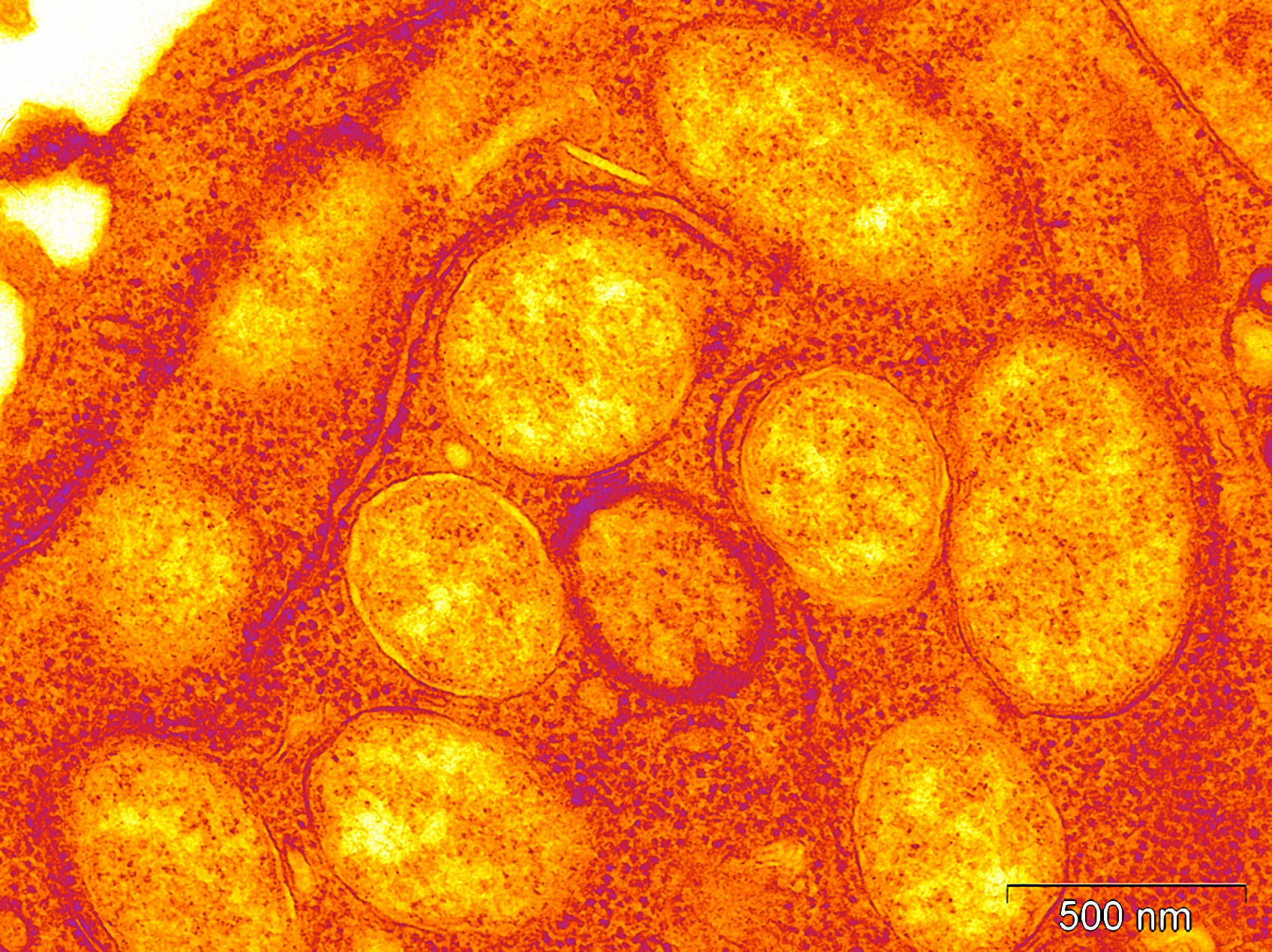
But exactly how CI scuppers the infected male/uninfected female crosses wasn’t known. Using their moviemaking chops, Sullivan and then-postdoc Uyen Tram (now a research associate at The Ohio State University), traced the problem to a timing glitch at the very beginning of embryogenesis, just after the egg is fertilized by sperm and starts dividing. When things are working properly, paternal chromosomes from the sperm and maternal chromosomes from the egg are in lockstep as they replicate and line up together in the middle of the cell. At that point the egg begins cleaving, ultimately creating two new cells with identical sets of mom and pop chromosomes. But in the case of CI, the father’s chromosomes are late to the party. They’re slow to replicate and fail to line up in time for cleavage. This leaves the daughter cells with only half the chromosomes they need. The embryo is DOA.
Sullivan and Tram submitted their findings to the journal Science in 2002. The paper was quickly greenlighted without further revision—a rare feat in the persnickety world of top-tier science publications. After that auspicious beginning, Sullivan and team went on to work out a more detailed model that’s a leading theory of how CI works. It explains not only why normal females can’t breed with infected males, but why infected females can: Wolbachia seems to delay the maternal chromosomes to match the late-arriving paternal ones, ensuring that all pieces are in place before division occurs.
Evolutionary ingenuity
That was the first of many Wolbachian mysteries explored by Sullivan and his collaborators. In 2004, along with postdocs Laura Serbus and Shelbi Russell and then-Ph.D. student Patrick Ferree (now an associate professor of biology at Claremont McKenna College), he began tackling another puzzle: how Wolbachia gets into the germ line, the cells that give rise to eggs and sperm. It’s a trek the microbes have to make in each new generation of insects they infect. They start out scattered throughout the egg cell inherited from the infected mother, but soon after fertilization, the bacteria begin migrating to the posterior end of the egg, the part that will become the germ tissue of the embryonic fly.
Using the tools of knockout genetics (see sidebar) on Drosophila melanogaster, Sullivan and team were able to piece together the molecular mechanics described in the opening paragraphs above: how Wolbachia infiltrates cellular supply lines, latches onto motor proteins, and changes horses in mid-stream to get to the rear of the egg.
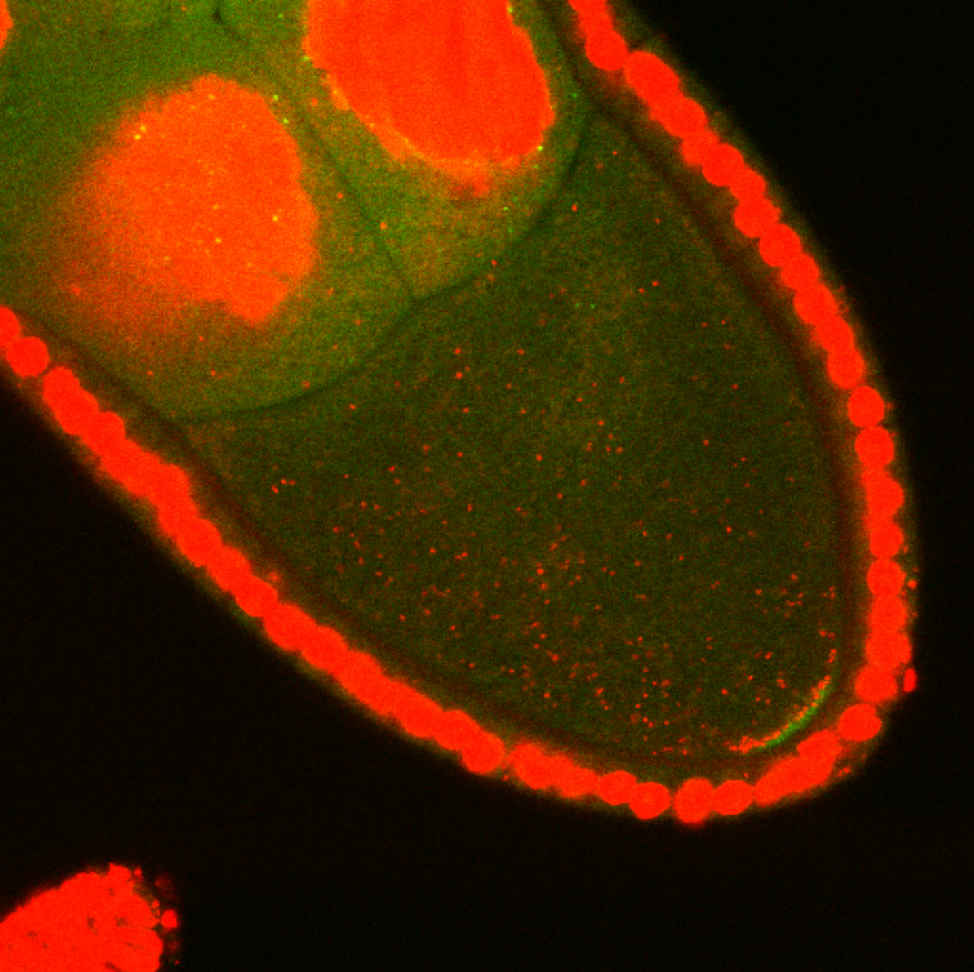
It’s a bravura display of evolutionary ingenuity, and not least because Wolbachia strikes such a delicate balance. While it binds to some of the available motor proteins, it also leaves plenty of slots open for the embryo’s own supplies. “As Shelbi Russell has shown, Wolbachia seems to have evolved as a weak competitor for the attachment sites, so it doesn’t impair the embryo’s development,” Sullivan said. Playing nice with hosts is good parasite policy. If they thrive, so does Wolbachia.
Sullivan and his team weren’t just uncovering the secrets of Wolbachia; they were developing new tools and techniques for Wolbachia research. Since Wolbachia can’t live outside of cells, studying it had previously meant working with whole infected insects: breeding them, subjecting them to various treatments, dissecting out the tissues of interest, and eyeballing the samples under the microscope to see the effects on Wolbachia. It was laborious and complicated. With the help of the cell biologist Alain Debec of the Institute of Ecology and Environmental Sciences at the Sorbonne University in Paris, Sullivan’s group radically simplified matters by developing the first Wolbachia-infected Drosophila cell line: cells containing Wolbachia that could be raised in vitro. “You can grow them indefinitely, freeze them, thaw them out whenever you need them, and do all sorts of neat things,” Sullivan said.
One of the neat things Sullivan did was to apply new “high throughput” lab technology—implemented by UC Santa Cruz professor of chemistry Scott Lokey—to streamline testing and assays. Instead of wrangling flies, manually manipulating them, and inspecting specimens one by one, he and his team could process hundreds of cell samples in batches using robotic handling systems. Mechanized microscopes could scan the samples and analyze the results. This automated approach made procedures like knockout genetics hundreds of times faster. “We could accomplish in weeks what would have taken years,” Sullivan said.
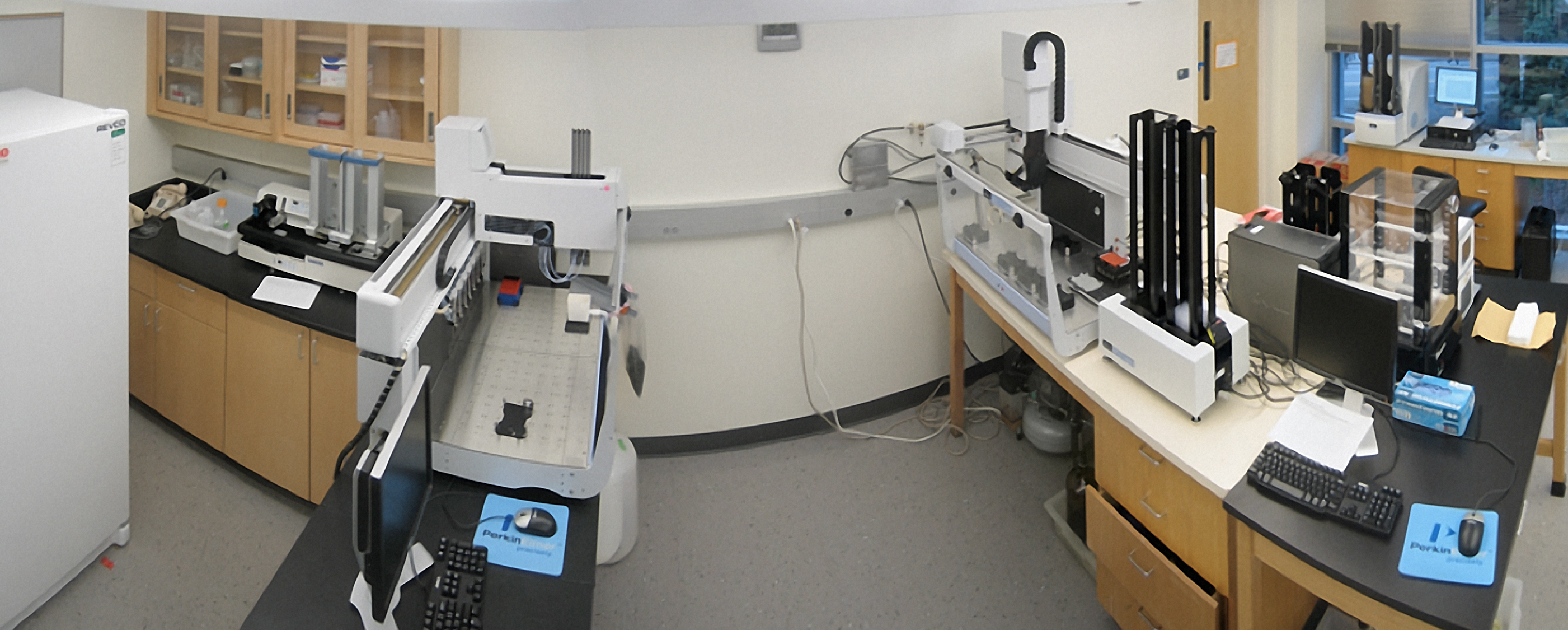
The worm turns
In the mid-2000s, Sullivan’s research took another turn when he learned that Wolbachia had been implicated in two major human maladies: onchocerciasis and lymphatic filariasis, better known, respectively, as river blindness and elephantiasis. The two diseases, which afflict more than 150 million people in tropical regions, are caused by parasitic filarial nematodes transmitted by blood-feeding insects. Once in humans, the threadlike adult worms pump out larvae that circulate through the body and can get stuck in tissues, causing grievous damage: permanent vision loss in river blindness and horrific swelling of the limbs and genitals in elephantiasis.
Now researchers were reporting that Wolbachia living in the worms was at least partly to blame. The bacteria, leaking from the nematodes, seemed to trigger a hyper-immune reaction and severe inflammation responsible for some of the worst symptoms. What’s more, the worms depended on Wolbachia for their very survival. In filarial nematodes, Wolbachia is an “obligate mutualistic endosymbiont,” a symbiotic sidekick the worms can’t live without.
The corollary was clear: kill the germ, and you could kill the worm. This was a potential game-changer. No drug existed that could safely rid sufferers of the adult nematodes. Instead, the standard treatment consists of killing the larvae with “microfilaricide” medications. Since the adult worms continue to churn out new larvae and can live in humans for a decade or more, keeping symptoms in check means patients have to take microfilaricides for years. But what if you could kill the adult worms after all, by dispatching the Wolbachia inside them using anti-bacterial meds? Then a real cure might finally be at hand.
Initial tests were encouraging. One study found that a six-week course of the antibiotic doxycycline could sharply reduce filarial nematodes in elephantiasis patients. That was a major step forward, but still not the magic bullet researchers were hoping for. Doxycycline isn’t safe for children and pregnant women, and six weeks of drug therapy isn’t practical for the kind of mass administration programs needed to reach millions of people in underdeveloped areas. The hunt was on for new compounds that offered speedier, simpler treatment. The effort got a big boost from the Bill & Melinda Gates Foundation, which was pouring hundreds of millions of dollars into the fight against river blindness, elephantiasis, and other neglected tropical diseases that affect the world’s poorest people.
Sullivan was no expert on tropical medicine, or nematode worms for that matter (he is a fly guy), but he knew a lot about Wolbachia and thought he might have something to contribute. Attending a conference on tropical diseases in 2007, he met scientists from the Anti-Wolbachia Consortium (A•WOL), which had begun drug discovery with Gates Foundation backing. “The problem was that they were using older, slower assay methods,” said Sullivan. “I told them we had a better way.” As luck would have it, the cell line and high-throughput automated assay system used by Sullivan’s team were tailor-made for testing potential anti-Wolbachia drugs.
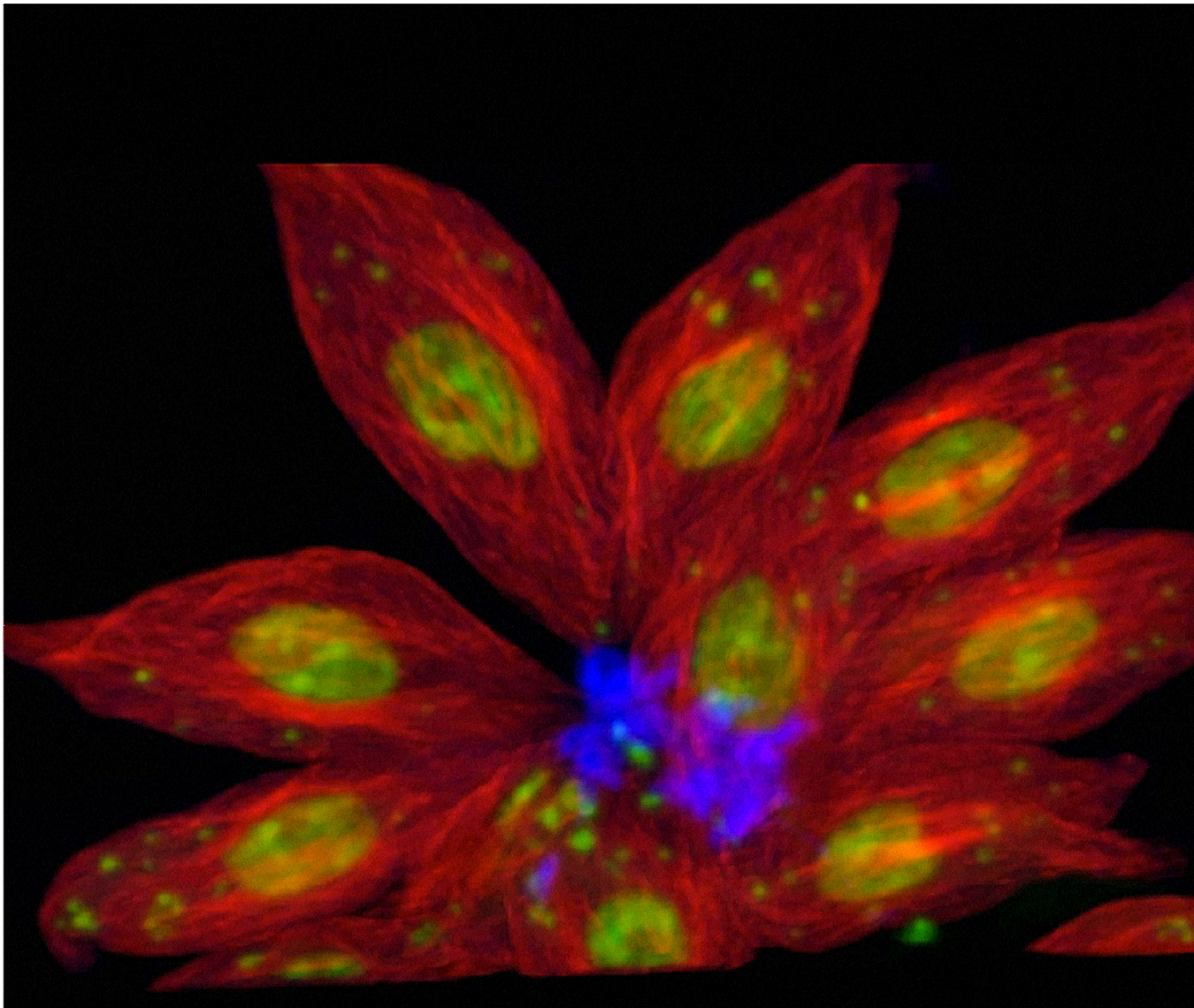
Two months later, with support from A•WOL and funding by the Gates Foundation, Sullivan had his own drug-screening operation up and running on Lokey’s high-throughput equipment. Over the next few years, Sullivan and his team checked almost 5,000 substances, looking for compounds that could kill Wolbachia without harming the host Drosophila cells. They found one, albendazole, that showed promise. Subsequent studies by A•WOL-affiliated researchers demonstrated that in combination with doxycycline, albendazole was able to shorten treatment times from six weeks to one. Larger clinical trials are underway.
After that initial success, it was time to scale up. The Lokey lab was at capacity, so Sullivan reached out to the California Institute for Biomedical Research (Calibr), a nonprofit that develops next-generation medicines, and set them up with the cell line and assay system. Together, Calibr and Sullivan’s lab have now identified several promising drug candidates while screening more than 300,000 compounds.
The dark side of symbiosis
While Calibr and other organizations continue to search for new drugs, Sullivan has gone back to more fundamental questions. The nature of the worm-germ symbiosis, for example: it’s obvious what Wolbachia gets out of the deal—room and board—but what does it bring to the table? To answer the question, Sullivan and postdoc Frederic Landmann (now an assistant professor at the Montpellier Cell Biology Research Center in southern France) treated filarial nematodes with antibiotics, wiping out the Wolbachia inside them. With the bacteria purged, development of young worms was scrambled, the embryos fatally deformed. In adult worms, apoptosis—a type of programmed cell death that organisms use to cull unwanted cells—went wild, leading to the mass suicide of normal cells.
No wonder the worms need Wolbachia to live; it seems to play a role in regulating several essential processes. But for Sullivan, that left a nagging question. Why do the nematodes rely on a bacterium to do things that other species, including the worms’ own evolutionary forebearers, could handle quite well on their own? Sullivan believes that something less benign is at work than the win-win partnership implied by “mutualistic symbiosis.” Instead of providing a service to nematodes in need, Wolbachia may have muscled its way into machinery that was already working just fine, shoving aside existing components and making itself indispensable for its own selfish ends.
Sullivan calls this “addictive symbiosis” (a phrase he borrowed from the book The Symbiotic Habit, by entomologist Angela E. Douglas), and he thinks it may be far more common in nature than assumed by conventional biological thinking, with its “comforting mutualistic kumbaya view.” He writes, “I would argue that many obligate endosymbiotic relationships are more akin to a big-box store locating in a town: much outcry and displacement, but ultimately a dependence on its presence. Simply by its presence, the box store created a need where none previously existed. Both in society and in biology, addictive symbiosis may be the rule rather than the exception.”
Whether it’s a cozy alliance or hostile takeover, worm and germ may be headed for a full-blown merger. Sullivan and others speculate that Wolbachia might someday become an intrinsic feature of its nematode hosts, like the ancient bacteria that long ago invaded our single-celled ancestors and became mitochondria—the intracellular “power houses” that all higher life forms depend on.
That example points out just how fluid and negotiable roles like parasite, pathogen, and mutualist can be. Wolbachia blurs the bright lines between those categories, and between organisms themselves. It tends to fuzz the boundaries between scientific domains, too. “The work that Bill’s done has given us new insight into how Wolbachia does its thing, and in the long run my bet is that it’s going to help us understand how symbionts in general do their thing,” said Barton Slatko, a molecular parasitologist at New England Biolabs who studies Wolbachia in nematodes. “It goes beyond cell biology and has implications for population biology, ecology, and evolution.”
Exploring those implications is the goal of Sullivan’s next big Wolbachia venture, a collaboration with population biologists Michael Turelli at UC Davis and Brandon Cooper, an assistant professor of biological sciences at the University of Montana. Their goal is what Turelli calls a “grand synthesis” connecting Wolbachia’s microscopic meddling to its large-scale effects on species and ecosystems.
For Sullivan it’s just one more twist in a mostly accidental journey. “I was fascinated by what Wolbachia does to cells and had no idea our work would have biomedical and ecological relevance,” he said. “It’s really a story of where curiosity can take you.” Curiosity, and, Sullivan admits, maybe a little something else: “It could be a case of addictive symbiosis.”
